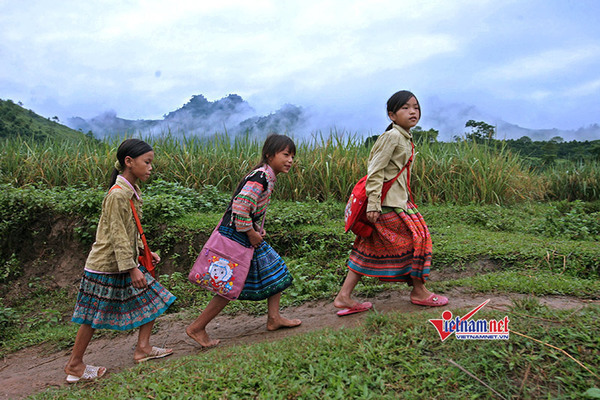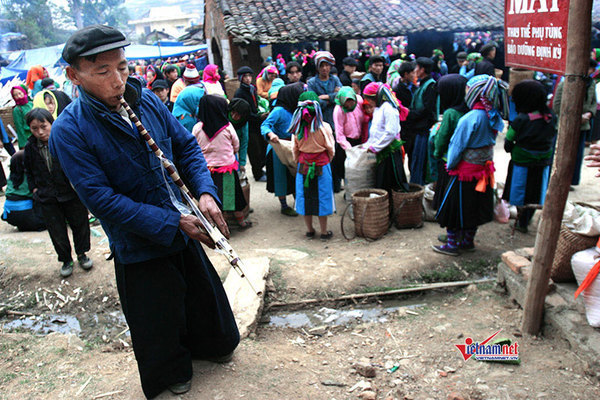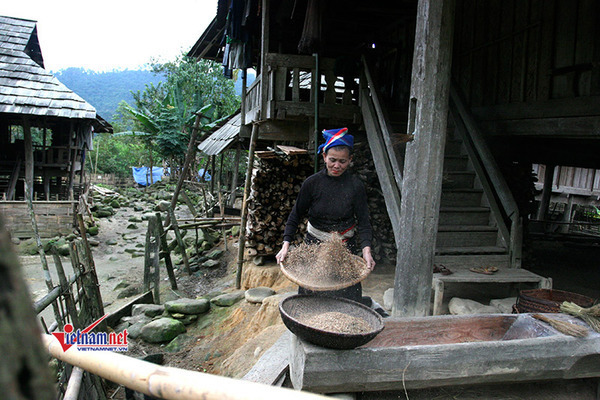 |
|
Protection and development of ethnic minorities of less than 10 thousand people is the goal of a project drafted by the Committee for Ethnic Minorities. Photo: LAD
|
This projects aims to improve the population status of ethnic minorities in terms of quantity and quality, in order to achieve replacement fertility, drastically reduce maternal and child mortality, sharply reduce malnutrition rates among children of under 5 years old, improve the quality of the population, ensure the equal development among ethnic groups.
"Protection and development of ethnic minorities of less than 10 thousand people"
This is the goal of the project entitled "Protection and development of ethnic minorities of less than 10 thousand people towards equality among ethnic groups," which is drafted by the Committee for Ethnic Minorities.
Specifically, the Committee for Ethnic Minorities proposed the targets to 2025 as follows: In terms of communication, at least 70% of population collaborators, village health workers, population officers at commune-level health stations, and prestigious people in the community of ethnic minorities are provided with information and knowledge about population, family planning, reproductive healthcare and healthcare for mothers and children.
Regarding access to population - family planning/reproductive health services: achieving the average reduction of 2-3% of the number of child marriage and inbreed marriage each year; 35% of young people get pre-marital counseling; 35% are provided with prenatal health check to detect infectious diseases, HIV; a reduction of 50% of pregnant women giving birth at home and the rate of maternal, newborn mortality; the rate of maternal mortality per 100,000 births to decrease by 25%; at least 35% of pregnant women to be screened for at least 4 most common congenital diseases; 50% of newborns to be screened for at least the 5 most common congenital diseases.
 |
|
Ensuring equality and equal development among ethnic groups
|
In terms of nutrition: reducing the rate of malnutrition among pregnant mothers, a reduction of 1.5-2% per year of malnourished children under 5 years old (underweight and stunting); a reduction from 2% to 4% of mortality rates among children of less than one years old.
Regarding education: raising the rate of children going to school in the pre-school age group; increasing the percentage of people aged 15-60 of ethnic minority groups with very small population to 95%; 90% of new literate people to continue to study to solidify literacy results.
The Committee for Ethnic Minorities proposes to implement the above project within 10 years, from 2020 to 2030. The project will be implemented throughout the country, with a focus on 13 provinces with ethnic minority groups of very few residents: Cao Bang, Ha Giang, Lao Cai, Yen Bai, Tuyen Quang, Thai Nguyen, Lai Chau, Dien Bien, Son La, Nghe An, Ha Tinh, Quang Binh and Kon Tum.
Socio-economic survey of 53 ethnic minority groups
The General Statistics Office conducted a survey to collect information on the socio-economic situation of 53 ethnic minority groups in Vietnam in 2019 on October 1 - 31, 2019.
 |
|
The General Statistics Office conducted a survey to collect information on the socio-economic situation of 53 ethnic minority groups in Vietnam in 2019 on October 1 - 31, 2019.
|
This is the second time this agency coordinating with the Committee for Ethnic Minorities to organize this survey. The previous survey was conducted in August 2015.
The purpose of the survey is to collect information on the socio-economic status of 53 ethnic minority groups of Vietnam in 2019 to compile statistical indicators belonging to the system of national statistical indicators and the system of indicators on ethnic affairs, serving the formulation of socio-economic development policies for ethnic minority regions in the 2021-2025 period. Statistics are also used as a basis for updating information systems and statistical data on ethnic minorities in Vietnam.
Subjects of survey include: Actual residents of ethnic minority households by the time of the survey; deaths of members of ethnic minority households; socio-economic and housing conditions of ethnic minority households; the situation of economy, social security, culture, health and education of communes, wards and townships in areas I, II and III (according to Decision No. 582/QD-TTg dated April 28, 2017) and communes, wards and towns not belonging to the above areas but having ethnic minority areas.
The information and data collected in this survey is a solid basis for the development of socio-economic development policies for ethnic minorities in particular and contributes to the development and prosperity of the country.
Minh Van
 The project 'Protection and development of ethnic minorities of less than 10 thousand people towards equality among ethnic groups' is one of the living proofs of the implementation of human rights in Vietnam.
The project 'Protection and development of ethnic minorities of less than 10 thousand people towards equality among ethnic groups' is one of the living proofs of the implementation of human rights in Vietnam.